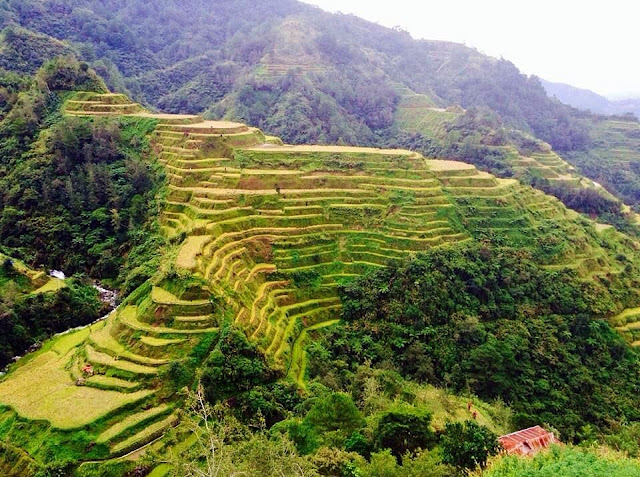Exploring the Wonders of Jeju Island
Located off the southern coast of South Korea, Jeju Island is a breathtaking destination known for its natural beauty, rich cultural heritage, and unique attractions. On my recent trip to this enchanting island, I embarked on an unforgettable adventure that took me to some of its most captivating sites. From hiking up the Sunrise Peak and exploring the Hallasan National Park to immersing myself in the Women Divers Museum and exploring the mystical Manjanggul Cave, every moment on Jeju Island was filled with awe-inspiring wonders.
Hiking to New Heights at Seongsan Ilchulbong or Sunrise Peak
One of the most remarkable experiences during my visit to Jeju Island was hiking up the Sunrise Peak, also known as Seongsan Ilchulbong. As the name suggests, this picturesque volcanic cone offers a perfect vantage point to witness a magnificent sunrise. Sadly, I overslept and missed the sunrise. However, hiking up the mountain was an unforgettable experience, nonetheless. Seongsan Ilchulbong is recognized as a World Heritage Natural Site and considered as one of the seven new natural wonders of the world. And there are several titles about this place at the foot of the mountain, so it's a bit touristy. I had to pay entrance fee to hike up the mountain. The hike to the peak was relatively easy with well- maintained trails and awe-inspiring views of the surrounding landscapes. Halfway through the mountain is one of the main attractions: a huge rock backdropped by a beautiful scenery. There's an inscription about the significance and historical value of the rocks, so visitors stop to take pictures. The trail goes one way to go up and down. The final part of the trail become narrower and steeper with railings. There's a viewing platform at the peak of the mountain. The panoramic vista of the ocean, the nearby Seopjikoji cliffs, and the emerald-green fields was truly a sight to behold.
Discovering the Legacy of Jeju's Women Divers at the Museum
Jeju Island has a long-standing tradition of haenyeo, or female divers, who harvest seafood using only basic tools and traditional techniques. To delve deeper into this remarkable cultural heritage, I visited the Women Divers Museum. The museum not only sheds light on the haenyeo's way of life but also showcases their immense strength, resilience, and dedication. Through captivating exhibits, photographs, and artifacts, I gained a profound appreciation for the haenyeo's unique contributions to Jeju's history and their significant role in preserving the island's cultural identity.
Immersing in Nature's Splendor at Hallasan National Park:
For nature enthusiasts and avid hikers, a visit to Hallasan National Park is an absolute must. It's famous for its more than 360 parasitic volcanoes and 1800 kinds of plants and several species of animals along its mountainside and home to South Korea's highest peak, Mount Hallasan, There are a few trails/tracks to reach the top of the mountain, ranging from 5 - 9 kilometers or 2 hours to 8 hours hike to reach the top of the mountain. I embarked on a 2-hour hike, surrounded by lush forests, vibrant wildflowers, and breathtaking panoramic view. Whether you're an experienced hiker or a nature lover seeking solace, Hallasan National Park is a haven that shouldn't be missed.
Venturing into the Mystical Manjanggul Cave:
A visit to Jeju Island would be incomplete without exploring the otherworldly Manjanggul Cave. This UNESCO World Heritage Site is one of the longest lava tube caves in the world, stretching for over 13 kilometers. Stepping into this subterranean marvel, I was mesmerized by the intricate formations of stalactites and stalagmites, as well as the cool, mysterious ambiance that surrounded me. Walking through the dimly lit passages, I marveled at the natural wonders sculpted by ancient volcanic activity. The Manjanggul Cave is a testament to the island's geological history and an awe-inspiring reminder of the forces of nature at work.
Unveiling the Enigmatic Sangumburi Crater:
As my journey on Jeju Island neared its end, I couldn't resist the allure of the Sangumburi Crater, a unique volcanic formation created over thousands of years. Upon arriving at the crater's rim, I was greeted by a vast expanse of lush greenery, contrasting with the dark volcanic soil. The crater's interior, resembling an enormous bowl, is home to a diverse range of flora, including rare plants and wildflowers. Walking along the well-marked paths, I was captivated by the tranquility and surreal beauty of this geological wonder. The Sangumburi Crater offers a serene escape into nature, allowing visitors to connect with the island's ancient past.
From witnessing breathtaking sunrises atop the Sunrise Peak to exploring the depths of the Manjanggul Cave, every adventure brought me closer to the island's awe-inspiring beauty and rich cultural heritage. Whether you're an outdoor enthusiast, a history buff, or simply seeking a serene getaway, Jeju Island offers an abundance of natural wonders and captivating attractions that will leave you enchanted. Plan your own expedition to this mesmerizing island and get ready for an unforgettable journey that will stay with you long after you've left its shores.
NOTE:
- All photos by the author
- I have no material connections to the products, brand names or tourist sites mentioned in this blog post.










Impressive and powerful suggestion by the author of this blog are really helpful to me. Destination Design Blog
ReplyDelete